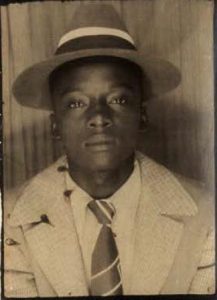Ernest Jr., Clarence James
Army Corporal
Clarence James Ernest Jr., age 24, from Louisiana, Pointe Coupee county.
Service era: Korea
Date of death: Thursday, July 9, 1953
Death details: On July 6, 1953, a large Chinese Communist Forces (CCF) unit attacked and overran the U.S. Army outposts on Pork Chop Hill in an attempt to seize whatever territory possible before the impending armistice agreement. After fighting for the position for four days, on July 10, the 7th Infantry Division Commander determined that the CCF disregard for casualties and desire to hold the outpost outweighed the position’s tactical value, and ordered a withdrawal that was eventually completed on July 11. The U.S. never again controlled Pork Chop Hill, preventing thorough recovery efforts for those who were killed or went missing during the fighting. Sergeant Clarence James Ernest Jr. entered the U.S. Army from Louisiana and was a member of Company K, 3rd Battalion, 17th Infantry Regiment, 7th Infantry Division. He was killed in action on July 9 during the fighting at Pork Chop Hill. His remains were not recovered, and he is still unaccounted for. Today, Sergeant Ernest is memorialized on the Courts of the Missing at the National Memorial Cemetery of the Pacific.
Source: National Archives, Defense POW/MIA Accounting Agency

 Death details: On July 11, 1950, the U.S. Army’s 21st Infantry Regiment, which had arrived in Korea six days earlier, was placed in defensive positions near the town of Chochiwon, South Korea. The regiment was not at full strength and lacked artillery and anti-tank weapons. That day, they were attacked by North Korean forces and were forced to withdraw to avoid being surrounded, as well as to buy time until they could be reinforced and resupplied. Corporal Alvin Clinton Dean, who joined the U.S. Army from Louisiana, served with I Company, 3rd Battalion, 21st Infantry Regiment, 24th Infantry Division. He was captured by enemy forces on July 12, near Chochiwon and forced to march to the Apex prison camps in North Korea. He died of malnutrition sometime during the spring or summer of 1951 at the camp near An-dong and was buried in the camp cemetery. His remains were not identified among those returned to U.S. custody after the ceasefire. Today, Corporal Dean is memorialized on the Courts of the Missing at the National Memorial Cemetery of the Pacific.
Death details: On July 11, 1950, the U.S. Army’s 21st Infantry Regiment, which had arrived in Korea six days earlier, was placed in defensive positions near the town of Chochiwon, South Korea. The regiment was not at full strength and lacked artillery and anti-tank weapons. That day, they were attacked by North Korean forces and were forced to withdraw to avoid being surrounded, as well as to buy time until they could be reinforced and resupplied. Corporal Alvin Clinton Dean, who joined the U.S. Army from Louisiana, served with I Company, 3rd Battalion, 21st Infantry Regiment, 24th Infantry Division. He was captured by enemy forces on July 12, near Chochiwon and forced to march to the Apex prison camps in North Korea. He died of malnutrition sometime during the spring or summer of 1951 at the camp near An-dong and was buried in the camp cemetery. His remains were not identified among those returned to U.S. custody after the ceasefire. Today, Corporal Dean is memorialized on the Courts of the Missing at the National Memorial Cemetery of the Pacific.